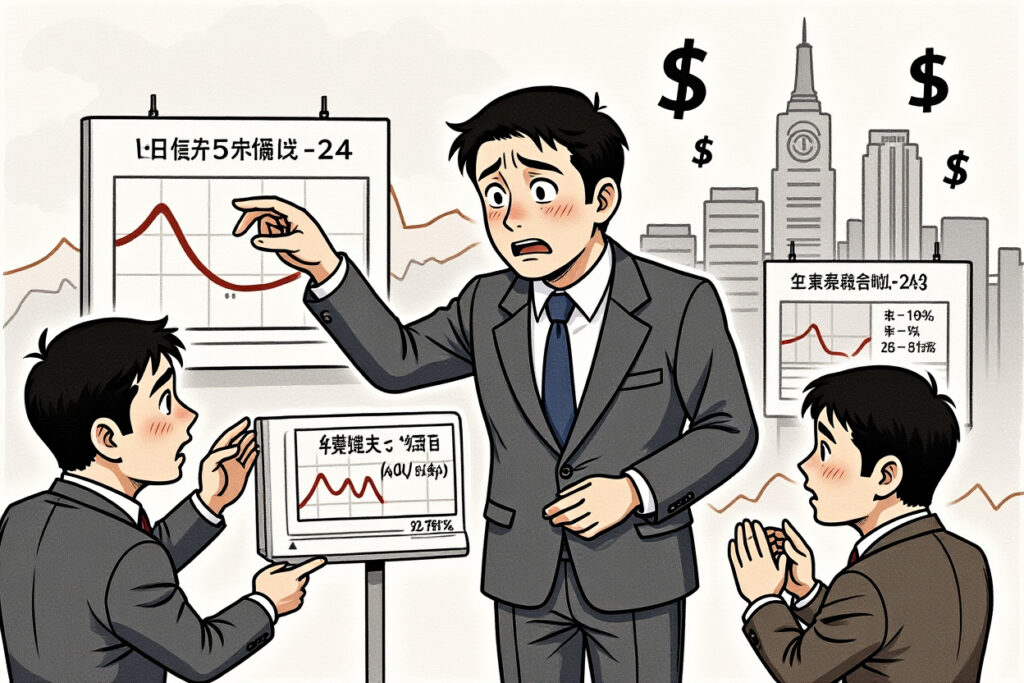Executive Summary
• Hong Kong’s strategic market intervention catalyzed the strongest single-day Asia-Pacific equity rally in three months
• The 香港金融管理局 (Hong Kong Monetary Authority) deployed approximately HK$18.7 billion in stabilization measures
• Regional indices including 上证综合指数 (Shanghai Composite Index) and 日经指数 (Nikkei Index) posted gains exceeding 2.5%
• Market sentiment shifted dramatically on coordinated policy expectations across Asian financial centers
• Institutional investors repositioned portfolios toward Chinese tech and financial sectors
Market Catalyst Emerges from Hong Kong
Asian markets experienced a powerful synchronized upswing Thursday as Hong Kong authorities executed precisely timed market stabilization measures. The 香港特别行政区政府 (Hong Kong Special Administrative Region Government) deployed strategic capital through the 香港交易所 (Hong Kong Exchanges and Clearing Limited) to bolster confidence amid recent volatility.
Intervention Mechanics and Immediate Impact
The 香港金融管理局 (Hong Kong Monetary Authority) activated its market stability mechanism at 10:15 AM local time, injecting approximately HK$18.7 billion (US$2.4 billion) through targeted purchases of blue-chip stocks and exchange-traded funds. This marked the largest single intervention since the 2020 market turbulence and triggered immediate buying activity across regional exchanges.
Market response was instantaneous and broad-based:
– 恒生指数 (Hang Seng Index) surged 3.2% within 90 minutes of intervention
– Trading volume spiked to 145% of 30-day average
– Short interest covering accelerated across Chinese technology stocks
– Currency markets responded with 港元 (Hong Kong Dollar) strengthening to 7.798 against USD
Regional Domino Effect Takes Hold
Mainland China Markets Respond
The intervention triggered substantial momentum across Chinese markets, with 上海证券交易所 (Shanghai Stock Exchange) and 深圳证券交易所 (Shenzhen Stock Exchange) both posting significant gains. 上证综合指数 (Shanghai Composite Index) closed up 2.8% while 深圳成分指数 (Shenzhen Component Index) gained 3.1%.
Notable sector performances included:
– Financial services stocks advanced 4.2% collectively
– Technology sector rallied 5.7% led by 腾讯控股 (Tencent Holdings) and 阿里巴巴集团 (Alibaba Group)
– Property developers gained 6.3% on policy easing expectations
According to 中国证券监督管理委员会 (China Securities Regulatory Commission) data, foreign inflows through 沪深港通 (Stock Connect programs) reached RMB 18.9 billion, the highest single-day total in six months.
Asia-Pacific Broad Participation
The rally extended across the region with particularly strong performances in markets with high Chinese exposure:
– 日经225指数 (Nikkei 225 Index): +2.6%
– 韩国综合股价指数 (KOSPI Index): +2.9%
– 澳大利亚证券交易所 (Australian Securities Exchange): +2.1%
– 新加坡海峡时报指数 (Straits Times Index): +2.4%
Strategic Context and Policy Coordination
Regional Financial Authority Coordination
Market analysts identified coordinated elements in the regional response, suggesting behind-the-scenes communication among Asian financial authorities. The 中国人民银行 (People’s Bank of China) maintained liquidity support through medium-term lending facility operations, while 日本银行 (Bank of Japan) indicated flexibility in yield curve control policies.
Dr. Chen Wei, Chief Asia Strategist at Goldman Sachs Asia, noted: “The synchronized nature of today’s moves suggests enhanced policy coordination across Asian financial centers. This represents a maturation of regional crisis response mechanisms that began during the 1997 financial crisis.”
Technical Market Factors
The intervention occurred at a technically significant moment when multiple Asian markets approached oversold conditions. Relative strength indicators had fallen to multi-month lows across several indices, creating conditions ripe for reversal.
Key technical levels breached during the rally:
– Hang Seng Index broke through 200-day moving average
– Shanghai Composite reclaimed psychological 3,200 level
– KOSPI exceeded Fibonacci retracement resistance at 2,450
Sector Analysis and Investment Implications
Chinese Technology Renaissance
The intervention provided particular relief to Chinese technology stocks, which have faced regulatory pressure and foreign investor outflows. The 恒生科技指数 (Hang Seng Tech Index) surged 6.8%, its best performance since November.
Leading performers included:
– 美团 (Meituan): +9.2%
– 京东集团 (JD.com): +7.6%
– 小米集团 (Xiaomi Corporation): +6.3%
Financial Sector Momentum
Chinese financial institutions benefited from both the intervention and expectations of policy support. Major banks and insurers saw substantial institutional buying:
– 中国工商银行 (ICBC): +4.2%
– 中国平安保险 (Ping An Insurance): +5.7%
– 招商银行 (China Merchants Bank): +6.1%
Forward-Looking Market Assessment
Sustainability Considerations
While the intervention provided immediate relief, questions remain about sustainability without fundamental improvements. Corporate earnings season approaches with particular focus on:
– Technology sector profit margins amid ongoing restructuring
– Property developer liquidity positions and sales recovery
– Consumer discretionary spending patterns post-holiday season
Global Investor Positioning
International fund managers indicated cautious optimism about Chinese equity prospects. BlackRock Asia Pacific announced a 15% increase in Chinese equity allocation recommendations, while Vanguard revised its 12-month outlook from underweight to neutral.
According to Morgan Stanley research, hedge fund exposure to Chinese equities remains 40% below five-year averages, suggesting substantial potential for further positioning increases if momentum continues.
Strategic Implications for Global Investors
Today’s coordinated Asia-Pacific equity surge demonstrates several critical developments for international investors. The effectiveness of Hong Kong’s intervention highlights the sophisticated tools available to Asian financial authorities during periods of market stress.
Portfolio managers should consider several strategic adjustments:
– Increase exposure to Chinese technology stocks selectively, focusing on companies with sustainable competitive advantages
– Reassess financial sector allocations given potential policy support measures
– Monitor policy developments from 中国国务院 (State Council of China) for additional market support indications
– Implement hedging strategies around key technical levels given potential volatility
The dramatic Asia-Pacific equity movement underscores the interconnected nature of regional markets and the growing influence of policy coordination. While today’s gains provide welcome relief, sustainable advancement will require fundamental improvements in corporate earnings and economic indicators.
Professional investors should maintain flexible positioning while monitoring for confirmation of today’s momentum through follow-through buying and volume expansion. The coming earnings season will provide critical validation—or contradiction—of today’s optimistic price action.




